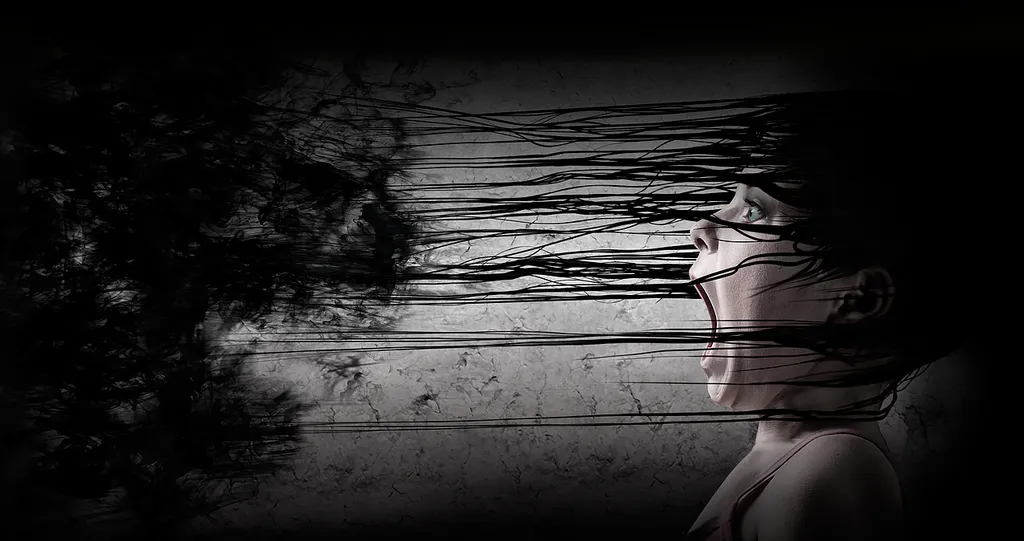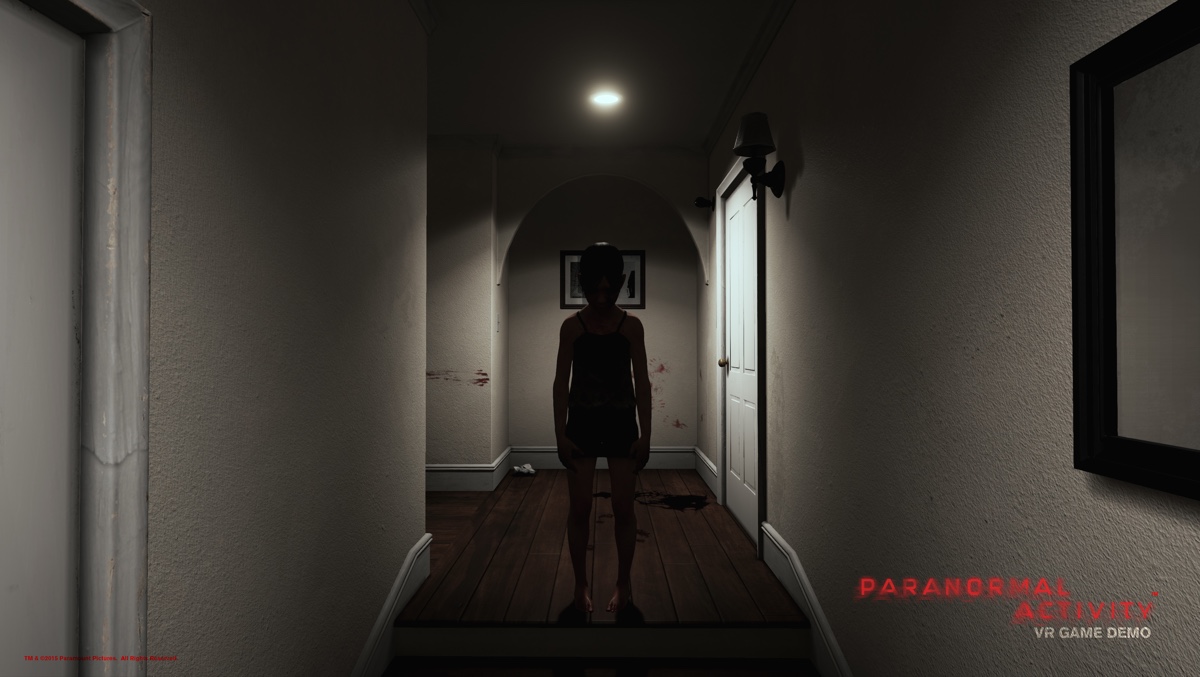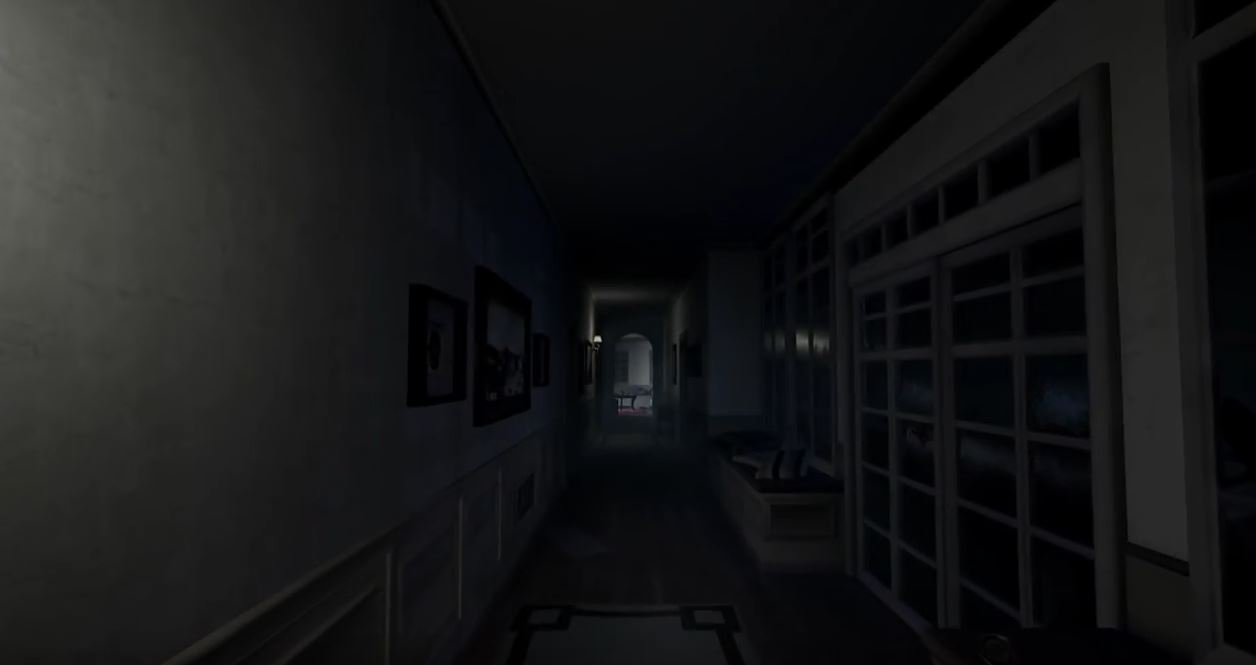Update: Paranormal Activity: The Lost Soul is now available in Steam Early Access for HTC Vive and Oculus Rift at the price of $39.99 with a 15% launch discount. The current edition of the game can be played entirely from start to finish, but the fully launched version, which is planned in a few more months, will include “more randomized scares, improved textures, improved AI, more hidden items, improved animations, improved object interactions, improved lighting and much more.” A PSVR release will follow the full launch later this year. The headline of this story was also updated to reflect the released status.
Original: Last year at GDC, I saw someone rip off their Vive headset and throw it across an entire demo booth. She was cowering in fear, on the verge of tears, ready to run out of the Moscone Convention Center. This year at GDC the responses weren’t as extreme because the demo was far more reserved, but the quality of the immersion and atmosphere still rang true.
Paranormal Activity: The Lost Soul (aka Paranormal Activity VR) is a slow-paced first-person exploration survival horror game. As opposed to Resident Evil 7 [Review: 9/10] which asks you to unload shotgun shells and flame throwers on creepy monsters, Paranormal Activity isn’t going to give you any guns or weapons. Instead, it’s going to slowly haunt you, scare you, and make you want to rip the headset off and run far, far away.
During my demo at GDC this year, I began in a situation quite similar to many horror movies or video games: completely surrounded by darkness. I looked down and noticed a flashlight in my hand, so I pressed one of the face buttons of the Oculus Touch controllers to click the light on. Once I inspected my surroundings a bit I could tell I was standing at the top of a staircase. After a few steps an invisible force ripped the flashlight from my hand, giving way to a bit of a jump on my part.
I tried to find the flashlight on the ground, but had no luck, so I just rounded the corner into a room that looked like an altar of some kind. There were creepy, bloody, demonic markings all over the ground with candles flickering. Past the altar was a pedestal with a book that outlined a ritual. I had to burn a specific piece of paper, then place coins in their corresponding locations. Thus began a mini scavenger hunt.
The piece of paper was easy to find, but the coins were scattered around the room. Once the animation was triggered, things started to feel different around me, which seems odd to say since I couldn’t actually feel the air and environment around me at all — but in VR, your mind plays tricks on you. Those tricks are exactly what the developers are trying to toy with here.
A small girl emerges from a hole in the wall over in the corner, requiring me to literally get down on my hands and knees to crawl into the space and retrieve a flashlight. With a quick button press I flip it over to a UV light and notice a cryptic message scrawled on the ground. Then as I turn to look over my shoulder I notice a woman entering the room. Her skin is overly wrinkly and her voice is frantic. She threatens me with harsh words, then ascends the stairs back out of the room. Naturally, my demo attendee tells me that I should follow her. I don’t want to.
After a few steps up the stairs I can feel my muscles tensing up, palms sweating, and teeth clenching. A jump scare is coming; I know it is. And sure enough, as I round a corner on the stairs the woman emerges once again to nearly make me drop the controllers. Even when you know they’re coming, jump scares in VR can still startle you to the bone.
After my demo, Alex Barder and Russell Naftal at VRWerx explained to me some of the design ideas that went into the game’s creation. First and foremost, they wanted to focus on crafting a large, explorable game space (a multi-level house with several floors, an attic, and a basement) that could combine together for a 10+ hour narrative. That sets it up as one of, if not the, longest purely VR titles to date if the length estimate holds true.
A big part of the design is also how they’ve crafted a randomized system to startle players as they explore the house. When I enter a bedroom, a lamp might fall off a table and shatter, but for someone else that might not happen at all. For them, a book might fly off of a shelf an hour later in the game that I never get to see. This makes sure that it feels like a more organic and intimate experience for each player.
Paranormal Activity VR is set to release in Early Access for the Oculus Rift and HTC Vive very soon on March 14th, with a full launch on both platforms, plus Sony’s PlayStation VR (PSVR) shortly after. Pricing is still up in the air, but they’ve assured that it will feel like a fair price.
And if you love getting your horror fix, check out this list of other upcoming horror games to keep an eye on this year!




























